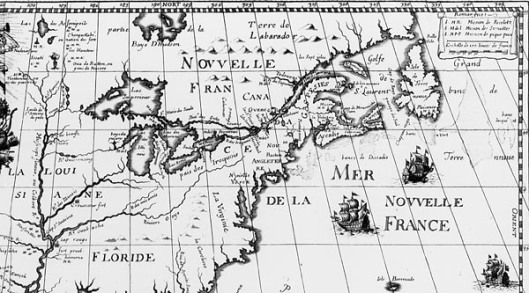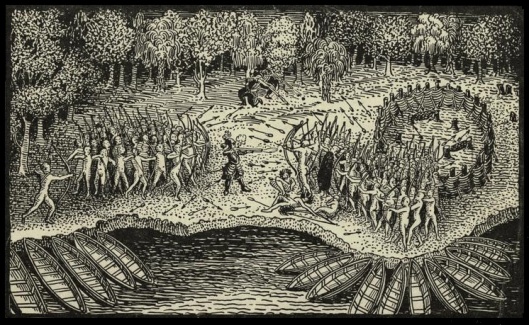During the mid to late 16th century France and Spain, the two wealthiest and militarily most powerful nations in Europe, competed for continental domination. While near evenly matched in Europe, Spain reigned supreme in the New World, controlling a vast, burgeoning empire that stretched from the lush Northern American Great Plains to the majestic Andes Mountains in South America. By contrast, France possessed no permanent colonies in the Americas, their only attempts at early colonization thwarted by natural misfortunes and, most notably, Spanish military intervention in Florida. Hence, rather than continue trying to establish themselves at the doorsteps of Spanish America, the French concentrated on settling farther north to present-day Canada.
In 1534 French explorer Jacques Cartier (1491-1557) claimed territory along the banks of the St. Lawrence River and nearby Acadia for King Francis I of France (r.1494-1547). While French settlement of the newly discovered territory was grudgingly slow, soldier and explorer Samuel de Champlain (1574-1635) officially founded New France in 1608, and it soon evolved into a thriving trading community amidst the backdrop of a vast, untamed wilderness. Early arrivals to New France via the New French Trading Company included traders, explorers and soldiers, but few real colonists. Almost immediately, the French traded weapons, clothing, and other goods for furs with the local Native Americans.This system of trade helped foster trustworthy partnerships between the Indians and the French that enabled the colony to expand its influence virtually unimpeded into the upper middle of the North American continent.
The French soon lengthened their trading sphere to include many northern Algonquian speaking Native Americans, such as the Huron, Abenaki and several hunting nations of the Pays-d’en-Haut. Consequently, this put them in direct competition with the Dutch and English, and their powerful warrior cultured Native American ally, the Five Nations of the Iroquois Confederacy. Save for minor interludes of peace and uneasy episodes of cooperation, for the next century the French and their Native American Indian allies fought against the Dutch, then the English and Iroquois for control over the ever increasingly profitable fur trade, in addition to territory and power. Ultimately, the rivalry between the French and Iroquois helped maintain a competitive balance in North America during the late 17th and early 18th centuries.
By comparison to their rival French brethren, the English and Dutch fared poorly in establishing good relations with local Native American Indians. The English and Dutch preferred to remain culturally separated from the Indians and aggressively pursued acquiring land, while the French peacefully assimilated into their society. The French lived among them, learned their cultural practices, languages and most importantly, their unique combat tactics quite unlike anyone had ever seen in Europe. In return, the Native Americans allowed the French to live on their land with few objections. In addition, the French also sent missionaries to New France to convert the Indians to the Roman Catholic faith. Thus, their efforts were marginally successful, and helped to promote an unprecedented degree of spiritual unity between the Catholic French and Native American Indians. Nevertheless, the French sometimes failed to meet their objectives using this approach. In essence, through conversion to the Roman Catholic Faith, the French sought to make the Native Americans subservient and exclusively dependent on the French for their commercial support and protection. After 1633, the French crown took direct control over the dominion of New France, a position they maintained until ceding it to Great Britain in 1763 following the Seven Years’ War (1756-63).
Engraving based on a drawing by Champlain of his 1609 voyage. It depicts a battle between Iroquois and Algonquian tribes near Lake Champlain
Edmund Carter III



